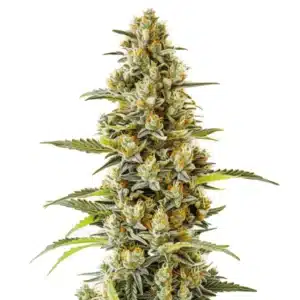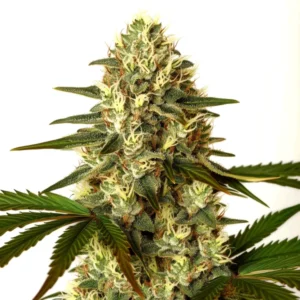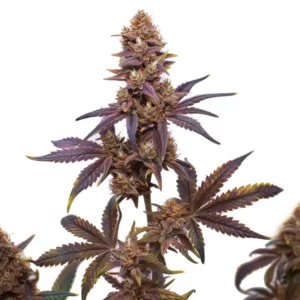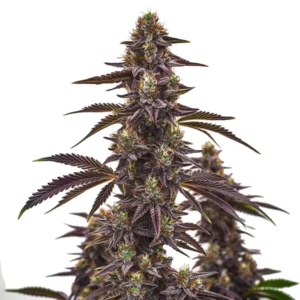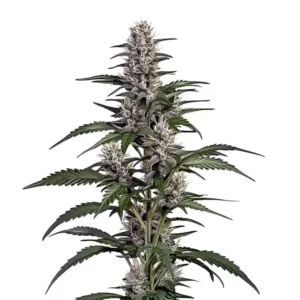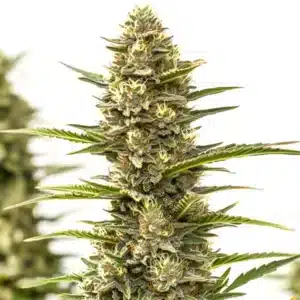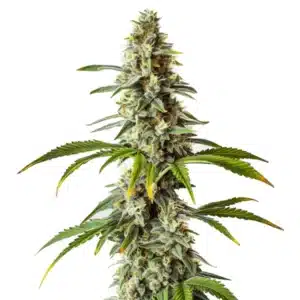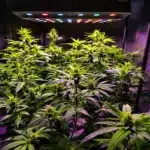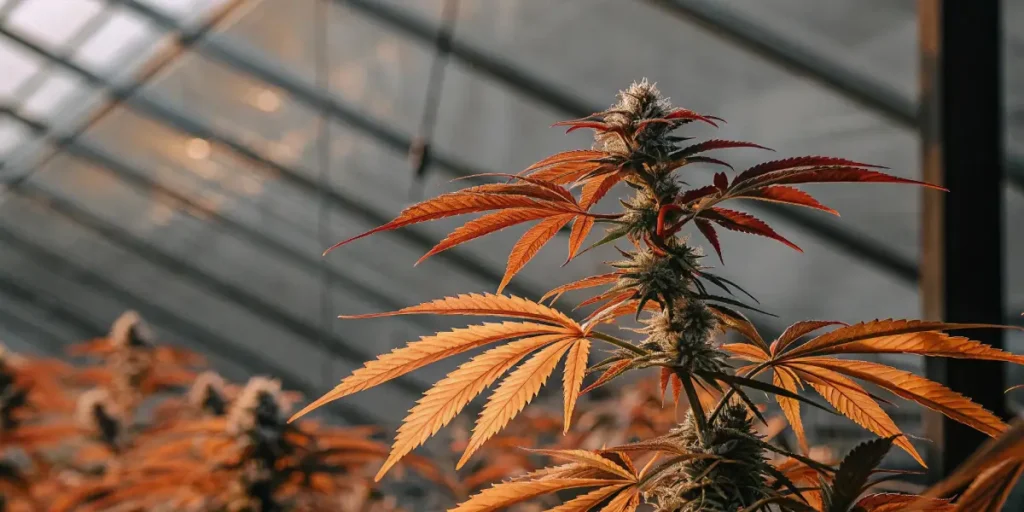
Hormonal Balance in Cannabis Plants
Have you ever noticed how some cannabis plants grow faster and produce more buds than others? A key factor in this is hormonal balance in cannabis plants. These hormones are chemical messengers that tell the plant how to grow, when to flower, and how to respond to environmental changes.
Think of hormones as the plant’s internal communication system. Just like in humans, hormones in cannabis plants regulate growth, development, and stress responses. If your plants aren’t thriving, they might be experiencing hormonal imbalance symptoms. This can lead to issues like stunted growth, poor yield, or even discoloration of leaves.
Recommended Strains
G13
|
|
THC | 16% - 21% (Medium) |
|
|
Type | Feminized |
|
|
Yield | High |
|
|
Phenotype | 70% Indica / 30% Sativa |
G13 x Nebula
|
|
THC | 20% - 24% (Medium) |
|
|
Type | Feminized |
|
|
Yield | Medium |
|
|
Phenotype | 45% Indica / 55% Sativa |
Hormones in cannabis are mainly divided into two types: growth hormones and stress hormones. Balancing these is crucial for healthy plant development. Let’s dive deeper into how you can regulate these hormones to ensure your cannabis plants reach their full potential.
Growth Hormones and Their Effects
Growth hormones in cannabis include auxins, gibberellins, and cytokinins. Auxins play a crucial role in cell elongation, which affects the height of your plants. They also help in rooting, which is why many growers use rooting hormones during propagation.
Gibberellins are another set of growth hormones that promote stem elongation, seed germination, and flowering. These are especially important during the initial stages of growth. Cytokinins, on the other hand, help with cell division and shoot formation. They balance out the effects of auxins and ensure bushy plant growth.
Knowing the function of growth hormones is vital for any grower aiming to optimize hormonal balance for cannabis yield. Each hormone must be carefully managed to ensure they work synergistically, promoting the best possible growth conditions. By recognizing the specific needs of your plants during different stages of their lifecycle, you can adjust your approach to cultivation, leading to healthier and more productive plants.
Moreover, the effects of hormonal imbalance on cannabis growth can be profound. An excess or deficiency of these hormones can result in growth abnormalities. Therefore, consistently monitoring plant health and adjusting cultivation techniques are essential practices for maintaining hormonal balance in cannabis plants.
Natural Ways to Balance Hormones in Cannabis Plants
Maintaining hormonal balance in cannabis plants can be achieved through natural methods. One effective way is by using organic fertilizers rich in nutrients that support hormone production. Bat guano, for example, is a great source of nitrogen and phosphorus, essential for producing growth hormones.
Another natural method is companion planting. By planting herbs like basil or marigold alongside cannabis, you can enhance growth hormone production. These companion plants can improve soil health, which in turn supports hormonal balance.
Incorporating natural ways to balance hormones in cannabis plants into your cultivation strategy not only benefits plant health but also promotes sustainable gardening practices. These methods reduce the reliance on synthetic products, thereby minimizing environmental impact. By focusing on soil health and biodiversity, you create an ecosystem that naturally supports hormonal equilibrium.
Additionally, using natural approaches helps in mitigating the effects of hormonal imbalance on cannabis growth. By fostering a balanced environment, you enable the plants to self-regulate their hormonal pathways, leading to a more resilient crop. This can ultimately result in a more robust and high-yielding harvest.
Promos & Deals
Stress Hormones and Their Management
Stress hormones in cannabis include ethylene and abscisic acid. Ethylene is known as the “stress hormone” because it regulates the plant’s response to stress factors like drought or pest attacks. It’s crucial for regulating flowering and fruit ripening.
Abscisic acid helps plants cope with stress by closing stomata to prevent water loss. However, too much of these hormones can lead to issues like slowed growth or leaf drop. Balancing these can improve plant resilience and boost yield.
Managing stress hormones effectively is essential for maintaining hormonal balance in cannabis plants. One natural way to achieve this is by ensuring optimal environmental conditions. Stress factors such as extreme temperatures or nutrient deficiencies can trigger an overproduction of stress hormones, negatively affecting plant health.
Regular monitoring and adjustments to growing conditions can significantly impact how well plants manage stress. By knowing how to regulate hormones in cannabis cultivation, growers can proactively address issues before they arise, promoting a stable and productive growing environment.
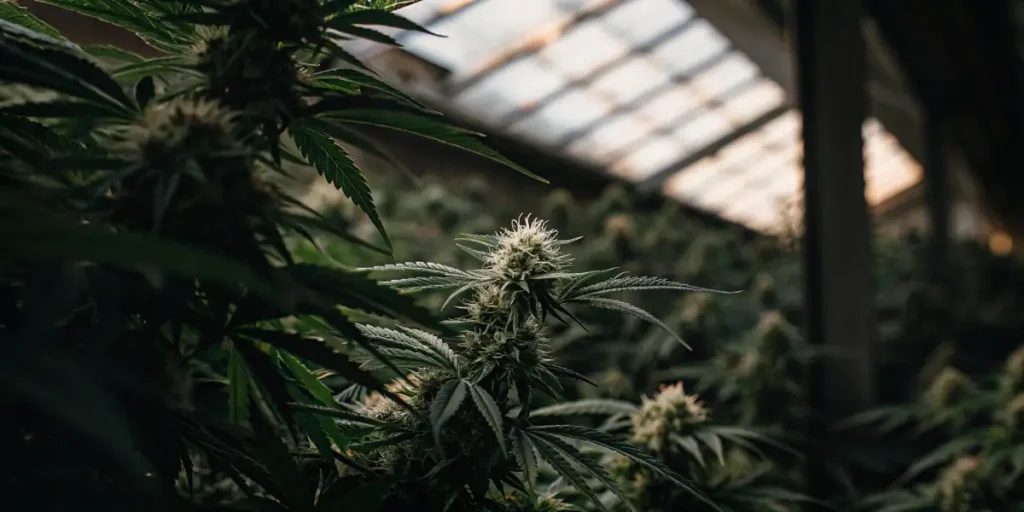
Managing Hormonal Imbalance Symptoms in Marijuana Plants
Recognizing hormonal imbalance symptoms in marijuana plants early can save your crop. Common symptoms include curling leaves, abnormal growth patterns, and reduced flowering. To manage these, ensure your plants are not overwatered, as excess water can trigger stress hormone production.
Improving soil drainage is a simple fix to prevent water-related stress. Also, monitor for pests regularly. Insect infestations can cause a spike in stress hormones, hampering growth. Use organic pest control methods to keep hormone levels in check.
Addressing hormonal imbalance symptoms in marijuana plants promptly can mean the difference between a bountiful harvest and a disappointing yield. Regular inspections and detailed documentation of plant health can facilitate early detection of imbalances, allowing for timely interventions.
Incorporating diverse pest management strategies, along with maintaining optimal soil conditions, can significantly enhance the resilience of your plants. This holistic approach not only helps in balancing hormones but also supports overall plant health, ensuring a successful cultivation cycle.
Optimizing Hormonal Balance for Cannabis Yield
Optimizing hormonal balance for cannabis yield involves both prevention and intervention. Regularly test soil pH, as imbalanced pH can affect hormone production. Aim for a pH between 6.0 and 7.0 for optimal hormone activity.
Another effective strategy is pruning. Removing excess leaves and branches can redirect hormone flow to budding sites, enhancing yield. Strains like Purple Punch benefit greatly from pruning, resulting in denser, more potent buds.
Maximizing yield through the optimization of hormonal balance in cannabis plants requires a comprehensive knowing of plant needs throughout their lifecycle. By tailoring your approach to suit each stage, you ensure that the plants receive adequate support for growth and development.
Furthermore, utilizing advanced cultivation techniques such as training and light manipulation can effectively enhance the production of growth hormones. These strategies, combined with regular monitoring and adjustments, form a robust framework for achieving superior yields.
How to Regulate Hormones in Cannabis Cultivation
Temperature control is vital in regulating hormones in cannabis cultivation. Keep your grow room between 68°F and 77°F to prevent stress hormone spikes. Sudden temperature changes can throw hormonal balance off, affecting growth.
Hydration is equally important. Ensure your plants are consistently watered but not waterlogged. Proper hydration supports the production of growth hormones like gibberellins, promoting overall health.
Knowing how to regulate hormones in cannabis cultivation involves a delicate balance of environmental management and cultivation practices. By maintaining stable temperature and humidity levels, you reduce the risk of stress-induced hormonal imbalances.
Additionally, employing precision irrigation techniques ensures that plants receive the right amount of water, supporting optimal hormone production. These practices, when integrated into a comprehensive growing strategy, can significantly enhance plant health and yield.

FAQs About hormonal balance in cannabis plants
What are the effects of hormonal imbalance on cannabis growth?
Hormonal imbalance can severely impact cannabis growth. Plants may exhibit stunted growth, poor flowering, and reduced bud size. These issues arise when stress hormones outweigh growth hormones, disrupting normal development.
To mitigate these effects, you should closely monitor environmental factors like light and water, as these directly influence hormone levels. Providing a stable environment helps maintain healthy hormone levels, promoting vigorous growth.
The effects of hormonal imbalance on cannabis growth are multifaceted, often resulting in visible symptoms such as leaf discoloration and abnormal morphology. Knowing these signs can help growers implement corrective measures in a timely manner.
By focusing on preventive strategies, such as maintaining optimal growing conditions and employing natural methods to balance hormones, you can minimize the impact of hormonal imbalances, ensuring a healthy and productive crop.
Can I use commercial products to balance hormones in cannabis plants?
Yes, there are commercial products designed to enhance hormonal balance in cannabis plants. These include hormone supplements and growth regulators. However, it’s important to follow the manufacturer’s guidelines to avoid over-application.
While these products can be effective, integrating natural methods such as using organic fertilizers and maintaining optimal growing conditions can also support hormonal balance without additional costs.
Commercial products offer a convenient solution for growers looking to correct hormonal imbalances quickly. However, they should be used judiciously and in conjunction with other cultivation practices to ensure long-term plant health.
Ultimately, a balanced approach that combines commercial products with natural and sustainable practices can provide the best results, enhancing both the quality and quantity of your cannabis yield.
How can I identify hormonal imbalance symptoms early?
Early identification of hormonal imbalance symptoms in marijuana plants includes observing changes in leaf color, growth rate, and flowering patterns. Leaves may become discolored or curled, and growth may slow significantly.
Regularly inspect your plants and maintain a detailed log of their development. This practice allows you to spot any deviations from normal growth quickly, enabling timely interventions to restore balance.
Identifying hormonal imbalance symptoms in marijuana plants early requires keen observation and a thorough knowing of normal growth patterns. Regular documentation of plant health provides valuable insights for early detection.
By staying informed about the latest cultivation techniques and maintaining an open line of communication with fellow growers, you can enhance your ability to recognize and address hormonal imbalances before they adversely affect your crop.
Are there specific strains better suited for hormonal balance?
Some strains are naturally more resilient to hormonal imbalances. For instance, Auto Bruce Banner and Purple Punch are known for their robustness and ability to maintain growth and yield under various conditions.
When choosing strains, consider those with a reputation for stability and resilience. These strains are often better equipped to handle minor fluctuations in hormonal balance, making them ideal for both novice and experienced growers.
Selecting strains that are better suited for maintaining hormonal balance can greatly simplify cultivation efforts. These strains are often bred for stability, providing consistent performance even under less-than-ideal conditions.
By focusing on resilient strains, you reduce the likelihood of encountering growth issues related to hormonal imbalances, making your cultivation process more efficient and rewarding.
What practical steps can I take to optimize hormonal balance for cannabis yield?
To optimize hormonal balance for yield, ensure your plants receive adequate light, nutrients, and water. Regular pruning and training techniques like topping or low-stress training can redirect hormonal energy to budding sites.
Additionally, maintaining a stable environment regarding temperature and humidity can help prevent stress-induced hormonal imbalances. These practices, combined with selecting high-yield strains like OG Kush, can significantly enhance your harvest.
Implementing practical steps to optimize hormonal balance in cannabis plants involves a strategic combination of environmental management and cultivation techniques. By keeping a close eye on growing conditions, you can proactively address imbalances.
Furthermore, adopting a holistic approach that incorporates both traditional and innovative cultivation methods can lead to superior yield outcomes. This comprehensive strategy ensures that your plants have the best possible conditions for growth and productivity.


